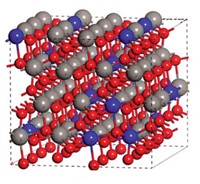Advertisement
Grab your lab coat. Let's get started
Welcome!
Welcome!
Create an account below to get 6 C&EN articles per month, receive newsletters and more - all free.
It seems this is your first time logging in online. Please enter the following information to continue.
As an ACS member you automatically get access to this site. All we need is few more details to create your reading experience.
Not you? Sign in with a different account.
Not you? Sign in with a different account.
ERROR 1
ERROR 1
ERROR 2
ERROR 2
ERROR 2
ERROR 2
ERROR 2
Password and Confirm password must match.
If you have an ACS member number, please enter it here so we can link this account to your membership. (optional)
ERROR 2
ACS values your privacy. By submitting your information, you are gaining access to C&EN and subscribing to our weekly newsletter. We use the information you provide to make your reading experience better, and we will never sell your data to third party members.
Environment
Microwaves Improve CO2 To CO Conversion
Efficient heating of industrial process could significantly reduce energy costs
by Elizabeth K. Wilson
December 9, 2013
| A version of this story appeared in
Volume 91, Issue 49
The conversion of carbon dioxide to carbon monoxide over a solid carbon substrate, known as the Boudouard reaction, is a key component of coal gasification and smelting processes. Scientists are also interested in harnessing the reaction to remediate excess CO2 because it’s a greenhouse gas. But the reaction CO2 + C → 2 CO normally requires temperatures above 600 °C, making it costly. Albert E. Stiegman and colleagues at Florida State University show they can reduce the temperature at which the equilibrium favors CO production to a mere 213 °C by using microwaves instead of heat sources such as steam (J. Phys. Chem. C 2013, DOI: 10.1021/jp4076965). Although microwaves have been known to increase rates of heterogeneous gas-phase reactions, the altered thermodynamics based on this type of heating method have not been observed before, the researchers say. Because microwaves rapidly heat the solid carbon substrate while CO2 gas passes through unheated, this reaction lends itself well to the study of microwave heating mechanisms—determining whether microwaves are just heating the reactants or exerting an irradiation effect. Stiegman’s team posits that microwave heating could be causing the carbon substrate to generate a steady supply of electron-hole pairs with which the CO2 reacts.





Join the conversation
Contact the reporter
Submit a Letter to the Editor for publication
Engage with us on Twitter